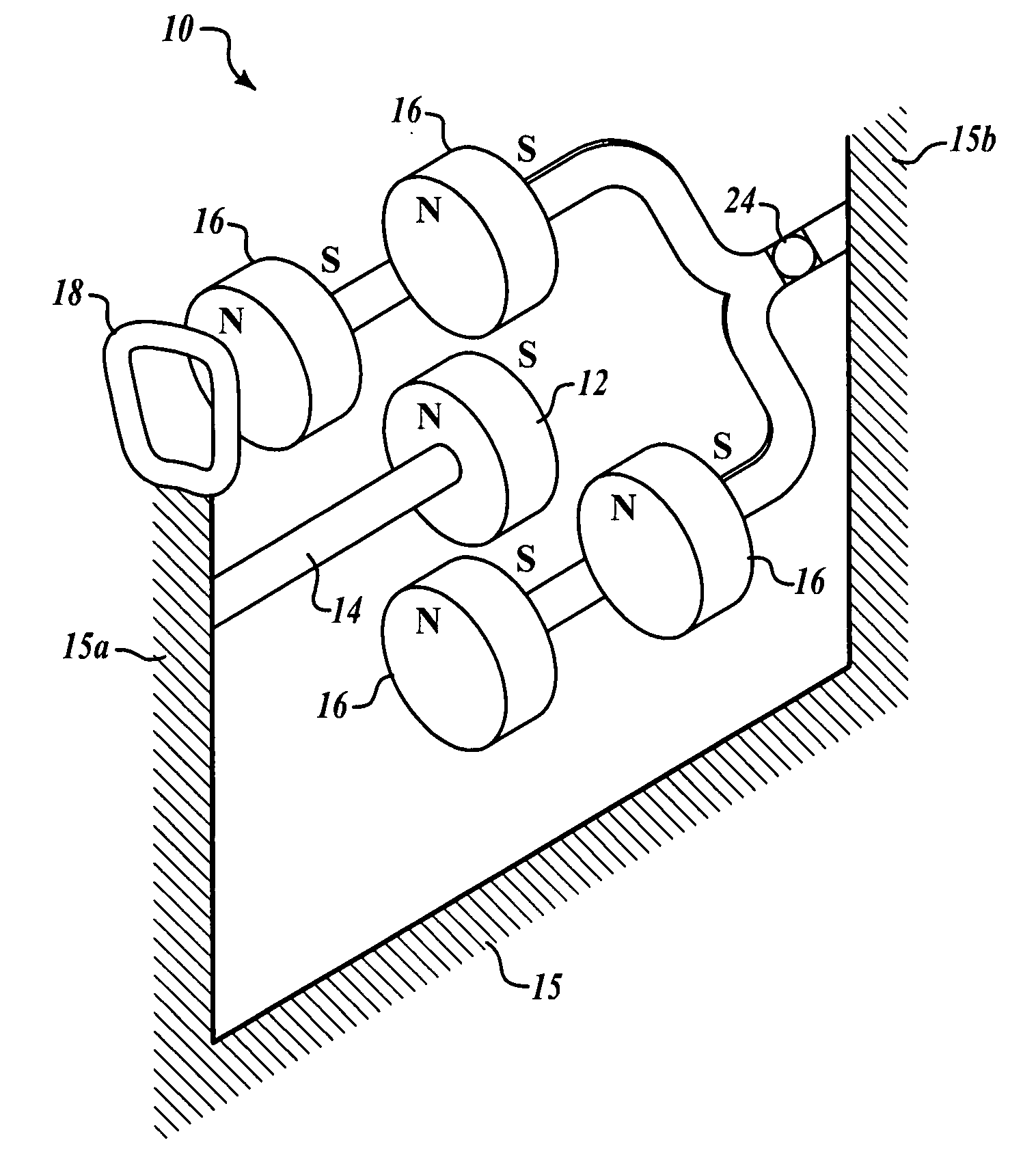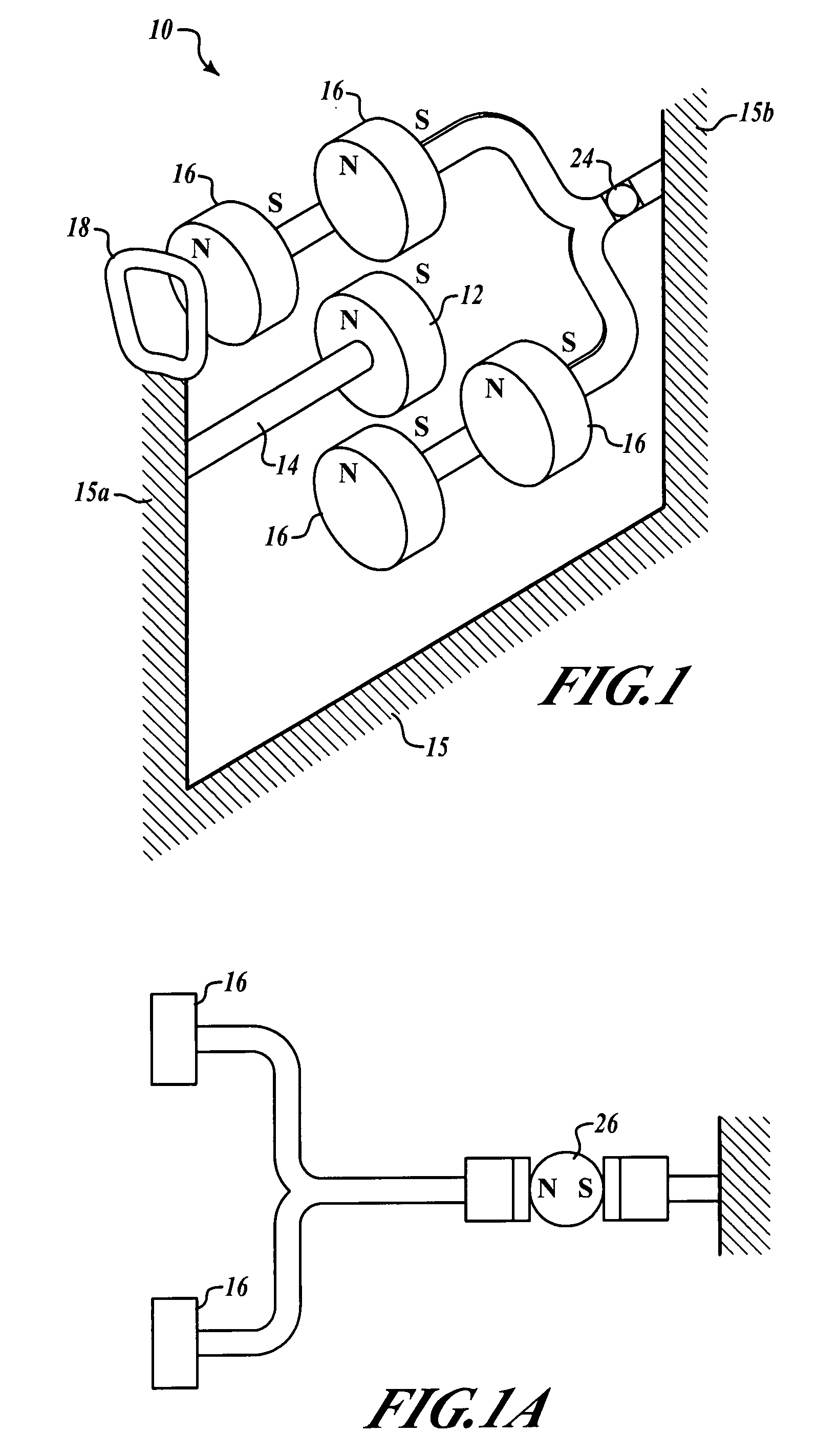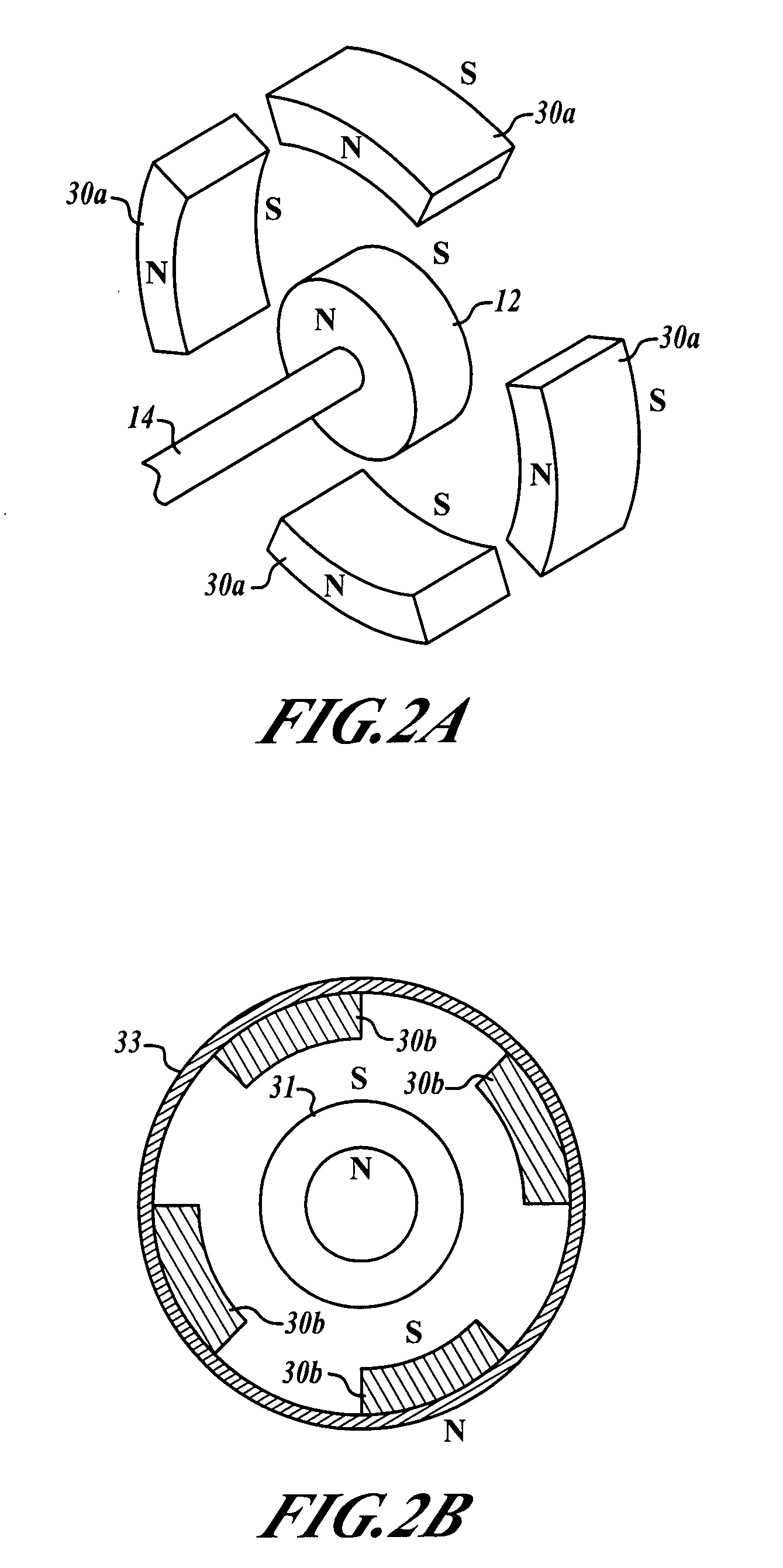Magnetic suspension with integrated motor
a technology of integrated motors and magnetic suspensions, which is applied in the direction of magnets, magnetic holding devices, magnetic bodies, etc., can solve the problems of suspension loss, power failure or servo malfunction, and the presence of its own power and servo complexity
- Summary
- Abstract
- Description
- Claims
- Application Information
AI Technical Summary
Benefits of technology
Problems solved by technology
Method used
Image
Examples
Embodiment Construction
[0015]FIG. 1 shows how the magnetic suspension motor invention 10 may comprise at least one central stator magnetic element, here a disc, 12 fixed to a stator shaft 14 and surrounded by a plurality of planetary rotor magnets 16, generally coplanar therewith. At least two rotor magnets are recommended for stability; in this preferred embodiment, four have been used for the single stator magnet. Likewise, several stator magnets 12 could be used and spaced apart along an elongated stator shaft 14, each one having generally coplanar planetary rotor magnets. Each axially polarized dipole magnet (rotor or stator) has two poles designated as N or S (other designations could be used; however, N and S are typically used according to convention). Having all like magnet poles oriented in a common direction results in strong repulsion forces which provide the radial magnetic suspension. This arrangement is in contrast to prior art suspensions which comprise one central magnet disc surrounded by...
PUM
| Property | Measurement | Unit |
|---|---|---|
| diameter | aaaaa | aaaaa |
| resistance | aaaaa | aaaaa |
| magnetic | aaaaa | aaaaa |
Abstract
Description
Claims
Application Information
 Login to View More
Login to View More - R&D
- Intellectual Property
- Life Sciences
- Materials
- Tech Scout
- Unparalleled Data Quality
- Higher Quality Content
- 60% Fewer Hallucinations
Browse by: Latest US Patents, China's latest patents, Technical Efficacy Thesaurus, Application Domain, Technology Topic, Popular Technical Reports.
© 2025 PatSnap. All rights reserved.Legal|Privacy policy|Modern Slavery Act Transparency Statement|Sitemap|About US| Contact US: help@patsnap.com



